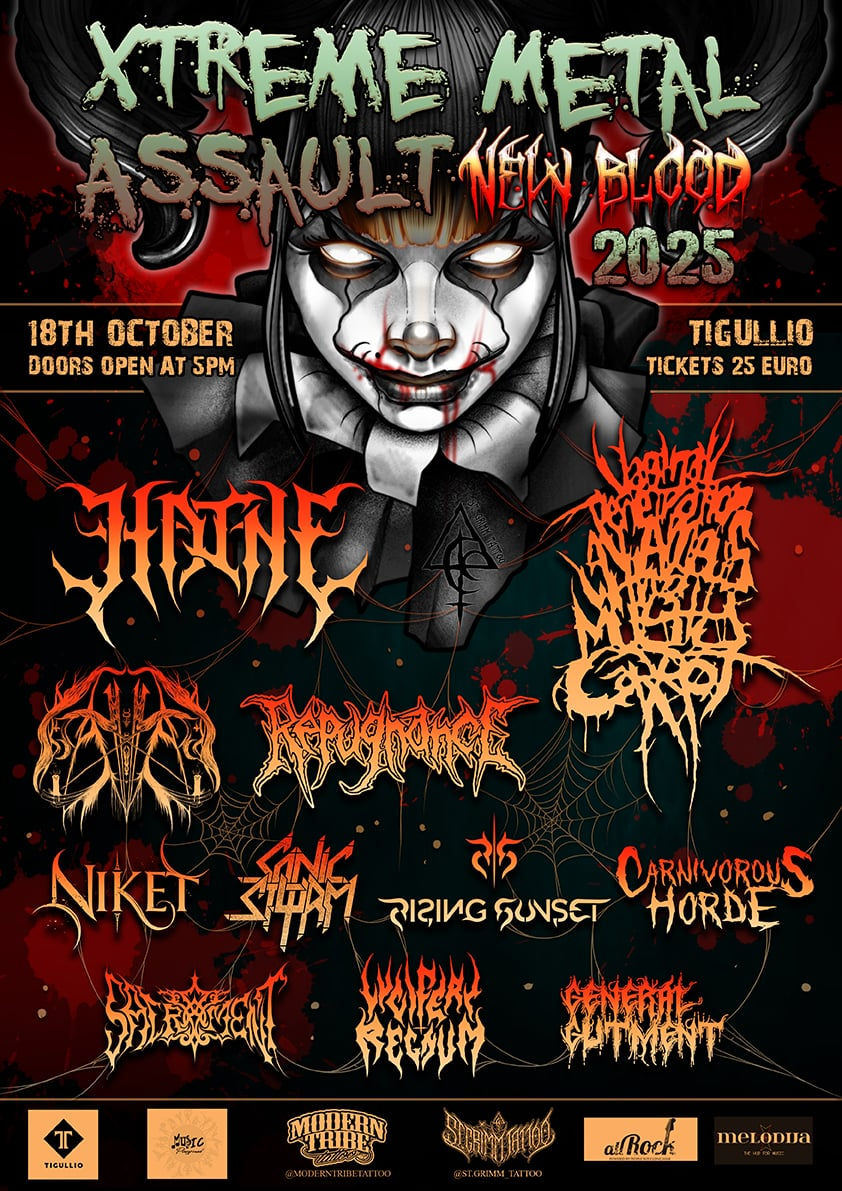Designing Darkness. Maltese Myths and Monuments in Dark Malta’s 2026 Artwork.
- Keith Muscat

- Jun 20
- 3 min read
One of the things I love about Dark Malta Festival is the artwork they create for every edition. It was hard to beat the corsair ship that sailed us through the 2025 edition, but somehow, the organiser pulled through. This time we have a collage of Maltese history, folklore and architectural monuments, merged together by the amazing Kuluri, who are once again responsible for creating the artwork. Let us unravel some of the mysteries.

In a nutshell, what we have here is the grim reaper, seated upon his throne, waiting patiently for the 2026 edition to start. But the devil is in the detail.
The Maltese connection:
Chapel of Bones, Valletta.

As explained in the press release revealing the 2026 artwork, the reaper and skulls, in the background, are in reminiscence of The Chapel of Bones, a unique attraction in Malta, that was sadly destroyed in 1941, due to an aerial bombardment during the Second World War. What was to become known as the Chapel of Bones was the crypt of the Nibbia Church. This church, dedicated to Our Lady of Mercy, was built in 1619 by Fra Giorgio Nibbia, hence the name. It was located near the Sacra Infermeria, the Order’s hospital, and its adjoining cemetery. The church was rebuilt in 1731 and in 1852 the crypt was decorated with skeletal human remains taken from the mentioned cemetery. As already mentioned, the church was heavily damaged by aerial bombardment in 1941, and the ruins were demolished. Rumour has it that the crypt might still survive intact.

The back of the throne is formed by part of the main gate of Malta’s iconic Addolorata Cemetery. After the British authorities decided that no burials could take place in churches, early during the 19th century, an area known as Tal-Ħorr, in the vicinity of Paola and Marsa, was identified to serve as a cemetery for the people of Valletta and the towns around the harbour. Interestingly this area has served as a burial ground since prehistoric times. Maltese architect Emanuele Luigi Galizia was commissioned to draw up the plans and the cemetery was built on neo-gothic style, between 1862 and 1868. The cemetery was enlarged several times during the years and is still the largest one in Malta. The beautiful chapel, dedicated to Our Lady of Sorrows, built at the highest part of the cemetery, adorned the first poster of Dark Malta Festival, back in 2018.


The city of Valletta, the capital of Malta, was founded by the Knights of St. John in 1566. Donations of money and other aid poured in from all over Europe as a result of the brave feat carried out during the Great Siege of 1565. We are not going into the history of this baroque city, as it is not the scope of this article. One of the majestic buildings adorning the city is the former Grand Master’s Palace, today serving as the President’s office in Valletta. This palace houses a unique armoury and a set of Gobelin Tapestries dating back to the Knight’s period, amongst other treasures. What is of interest to us is the closed balcony, the first one on the island, or rather a corbel that stands at the corner under the northern balcony. This apotropaic sculpture’s main scope was to ward off the evil eye. Walking through Valletta, and other old towns in Malta, one comes across other examples, but none so complex.
Still related to warding off the evil eye, yet of much more ancient origins, is the Eye of Horus, to be found at the top of the throne. The eye is a feature on the Maltese fishing boat known as luzzu or kajjikk. This tradition is thought to have originated with the Phoenicians, who were renowned merchants and sailors. The Phoenician period in Malta spans between the 8th century BCE and 218 BCE, when they lost the islands to the Romans. Apart from protection spells, these people introduced writing to the Maltese islands. The Eye of Horus is still used today on fishing boats to ward off bad luck and the evil eye.

Other details of the throne are two horned skulls, a bat and the pentacle. Apart from the poster, this magnificent artwork for 2026 will be on the official Dark Malta Festival merchandise. Stay tuned for more updates on the facebook event page or the official website darkmaltafestival.com, from were tickets for 2026 can be purchased. Take a hint from the Dark Malta Festival imagery to visit places are read about the history of the Maltese islands and our rick folklore ……… and don’t forget to get those tickets.




Comments